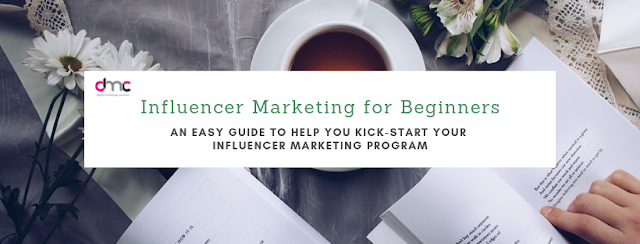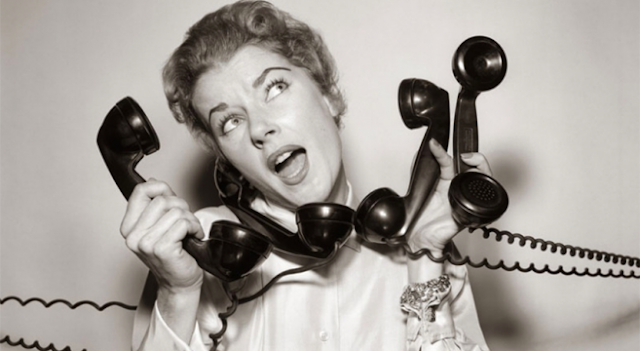Types of Influencers: Influencer Marketing Series
It is a myth that there is only one kind of influencer group - the celebrity influencer. There is indeed, life beyond the Kardashians. If we believe that anyone who has the ability to reach out to our target audience and has the ability to sway their purchase decision holds influence, then we significantly expand our understanding and consideration of influencers.
Want to learn how to start influencer marketing for beginners? Read this post to help you get started right away.
Customers
Your customers hold tremendous influence. They have experienced your offering once, if not more, and if they are happy / satisfied, they may be more likely to refer you to other like-minded people. Trust is an important decision making variable, and word of mouth from a trusted acquaintance / colleague can influence potential buyers more positively than expensive ads in mainstream media. Everyday, we make countless decisions - restaurant recommendations, appliance purchase decisions, holiday destinations recommendations - after checking in with our friends, family members and relatives. The same applies in business decision making as well. So ignore this influencer group at your peril.
How can you leverage this influencer group?
Positive product reviews, social media mentions and favourable word of mouth can help you leverage the power of customers as influencers. You may request your present customers for referrals, building a referral program for your current customers and reward those refer with highest frequency / volume. Also, depending on your business, you can ask them to acknowledge your brand on social media and share their experience through reviews / ratings.
Mega influencers
These are A-list celebrities, people with typically 1M+ followers, and have the highest reach on the influencer spectrum. Whether it is actors, athletes, artists or sports-persons, celebrities wield massive fan followings, solving the reach dynamic for most brands. Hearing / seeing their favorite celebrity espouse a cause or endorse a brand, can influence their followers to do the same. However, mega influencers / celebrities are better suited for larger brands with a global audience.
How to leverage this influencer group?
Easier said than done. Not only is celebrity endorsement expensive, but fraught with its own share of challenges. You need to find a celebrity that can align with your brand values, has reach and engagement with the target audience you have in mind. Needless to say, you need to be cognizant of what you will run into - controversies courted by the celebrities could have an effect on your brand as well. You have to also factor in all the negotiations with their management agency / staff - not a cakewalk either. Given that celebrities already have multiple demands on their time, you need to figure out the best ways to create & find ways of engagement and amplification. Tough love, especially if you are a nascent brand working with mega influencers.
The good news is that celebrities are refusing to collaborate with brands that they don't believe in - thus paving the way for ethical, value based endorsement. Whether it is iconic Indian cricketer Virat Kohli refusing to endorse Pepsi or bollywood actors refusing to endorse fairness products, tobacco or alcohol, this is a huge step in the right direction.
Macro-influencers
Macro influencers are professionals with a strong passion for a particular area. They might have 10K - 1M followers. They are not celebrities but have a highly engaged audience, mostly by virtue of sharing high-quality content in the first place. They can lend a brand reach and impact, while still within a moderate budget, unlike mega influencers. They have established their position courtesy their expertise in an area, and hence, perhaps a more natural fit for your brand if they are working in the same niche as you, unlike celebrity influencers.
How can you leverage this influencer group?
Use macro influencers to lend authenticity and expertise to your influencer marketing campaign. Unlike mega influencers, their usage of the product is much more believable, natural and likely, thus lending authenticity to the entire campaign. Unlike micro-influencers, they have a large engaged audience, immediately amplifying your brand voice.
Micro-influencers
Micro-influencers are brand advocates who have a deeply engaged, niche audience. These influencers might have around 500 - 10K followers. They are well on their trajectory to become macro influencers with continued growth and support of their followers. They benefit from higher engagement and trust [more slice-of-life, more relatable, hence more trustworthy]. Think beauty brands, fitness experts and the like - and you will realize how huge is the micro-influencer segment.
How to leverage this influencer group?
Where micro-influencers also score is that their low follower count [as compared to macro / mega influencers] is a blessing in disguise - they can cultivate more relationships with their followers, generate more engagement and hence, more visibility for your brand. Costs / benefits-wise, micro influencers might work out better for early-stage brands. The flip side is, there may be too many micro-influencers out there in the 500 - 10K follower range, and shortlisting the right way may need more than a couple of iterations.
Industry Experts
The expert influencer can have a significant, targeted and relevant fan following. I have not included them in the macro influencers group - because I believe they need a different outreach tactic. Think of a marketing book that you recently read, and the review that it might have received from a CMO - this is the kind of influence that we are talking about here. Their salience is because of their expertise in a particular area, along with the stature that they have in the industry.
How to leverage this influencer group?
These experts might have tremendous sway over their followers and because of having domain expertise, might be difficult to engage at all levels. Unlike a mega influencer, their endorsal of a product might be more credible and believable. Try to identify the relevant experts within your industry - you may want to engage them through events [a panel discussion on the broad problem that your brand addresses, and leave it open for discussion]. In this way, you will be seen as promoting category awareness without overt brand promotions.
Journalists
Journalists have this natural, content-centric readership and by virtue of covering an industry segment for long, they develop knowledge, specialist expertise, and industry contacts. They do hold power to sway public opinion - and because of their journalism experience are much more adept at identifying propaganda and underhanded promotional techniques adopted by brands. Hence, engaging this group is of extreme significance for the long term view. Ideally - the editorial should be at arm's length from any paid opportunities. There are many journalists of integrity in every industry who could be potential influencers.
How to leverage this influencer group?
Identify journalists that cover your industry - forge meaningful engagement with the ones that are subject experts, authoritative and authentic. It is essential to identify the voice of the journalist and the coverage style. Be mindful that independence is of critical essence here - the coverage may or may not be favorable to your brand. But in case you accept criticism with grace, that itself will help establish you positively in the minds of the target audience.
Micro-influencers
They influencers have generally between 1,000 and 10,000 followers and are believed to offer the best combination of reach and engagement. Since they are on their trajectory to become macro-influencers in a few years, it makes sense to engage them at this point itself. Also, as they are still in the growth phase, they would promote your brand with more enthusiasm than the established influencers.
How to leverage this influencer group?
Since these influencers are still in the nascent stage of the influencer spectrum, the connect that they have with their followers quite valuable to them. This gives you a better platform to work with them - as follower engagement is huge, clutter is less.
Employees
Employees make for natural brand ambassadors. If they believe in your product, selling / advocating for it becomes so much more easier. Lots of companies have rigidly defined rules for employee / product engagement on social media - making the whole employee - product relationship look like its contrived. If done right, employees can make for an extremely credible influencer group.
How to leverage this influencer group?
This is a difficult thing to pull off. You'd like the employees to share their opinions honestly, at the same time you have to be careful around the repercussions of media picking up only negative (but perhaps shared in good faith & honest) content shared by an employee. One method to navigate this would be to identify product evangelists / advocates. These key / chief product advocates would only share product information keeping in mind the context and the macro-environment. This is not to say that facts need to be concealed, but entrusting your brand to certain groups who are consumer facing and media savvy.
Senior Leadership
If your senior leadership espouses your product, it helps. Senior leadership does have impact and influence more than the average employee as they are able to influence not only their peer group but also their followers. It also shows the faith that leadership has in the product and encourages employees to do the same.
How to leverage this influencer group?
If you have a PR friendly, media savvy leadership, then you start on a strong note. Else consider media training to train senior executives for public / media support for your products. Whether it is large-scale industry events or a small private networking event, press interactions or social media, get your C-suite to throw their weight behind your brand.
Jeff Weiner is a huge brand advocate of LinkedIn, responds to comments and feedback, and helps build the LinkedIn brand. Likewise, many CEOs and C-suite executives, by adopting the brand, increase the brand visibility for their company's products.
Putting it all together
Just don't restrict the scope of your influencer marketing to social media influencers, and you will realize that you have a much broader playing field, with more possibilities. Look at other avenues for influencer identification, such as events. Finally, whether it is a mega or a micro influencer, you need to have your marketing strategy mapped to the influencer's strengths. No celebrity endorsement can substitute for a solidly crafted marketing strategy.
Share your experiences of working with influencers in the comments section below!






Comments
Post a Comment